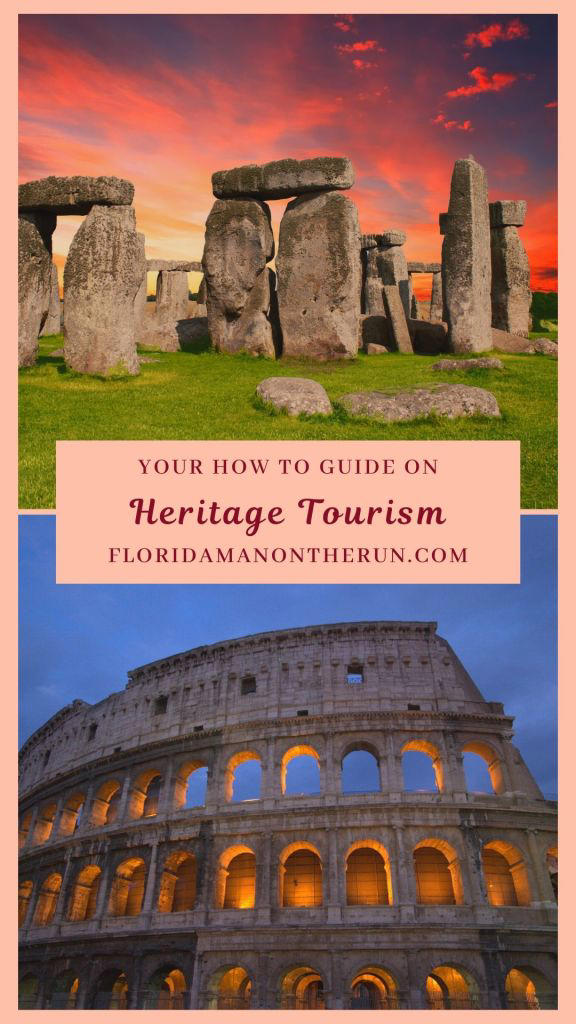Agrowing portion of tourism is focused on visiting important historical and cultural sites. This type of tourism is known as heritage tourism. I’m hoping that this guide to heritage tourism will serve as a foundation on your travels. As heritage tourism continues to grow in popularity, it brings both great benefits and big threats to the places which experience it. It brings a renewed focus on these heritage sites, and with it the economic benefits. However, the increased traffic presents threats to the sites themselves and can threaten the way of life of the people who live there. In our modern age its important to appreciate these important places responsibly. The onus is on us to play an active part in being responsible tourists, especially far from home.
Read More:- FedEx Pilots To Hold Strike Authorization Vote
What is Heritage Tourism?

While millions of people a year partake in it, most people have no idea what heritage tourism is. In fact, that’s probably why you’re reading this guide to heritage tourism int he first place. As defined by the National Trust for Historic Preservation, heritage tourism is “travelling to experience the places and activities that authentically represent the stories and people of the past.” In essence, when you visit a place to appreciate its history or people, that heritage tourism. The earliest form of heritage tourism would have been the Grand Tours undertaken by British or European elites. These tours focused on experiencing the culture of different European cities. It also featured visits to the grandest sites of Roman and occasionally Greek antiquity.
Read More:- A rare wolverine sighting was captured on video in Oregon
In our modern day, many young adults take similar journeys. Not limited to the upper class, people of all ages and classes will take trips across Europe to visit the major historical sites. Yet, heritage tourism has expanded far beyond Europe. With the ever increasing connectedness of our world, people can travel to nearly anywhere. Cultural sites across Asia, Africa and South America continue to increase in popularity. Even locations close to home can be prime sites for heritage tourism. There is a wealth of sites across the United States which have historical significance. When we think about protecting important historical sites, its important to remember that these places aren’t all far away.
Read More:- Washington state judge addresses abortion pill ruling contradicting Texas judge
Preparing Your Trip with this Guide to Heritage Tourism
One of the biggest keys to being a responsible traveler is preparation. Before you visit another country, you need to make yourself aware of their customs. Nothing makes you more unwanted somewhere than offending those who live there. Doing a bit of research to learn about the people goes a long way to having an enjoyable trip. This research also helps to make those visiting after you have better trips since you’ll prevent bad feelings. Understanding the culture should ultimately be one of your goals when visiting a new country. Otherwise, what’s really the point?
You’ll also want to learn the dos and don’ts of the sites you’ll visit. If you’re hitting the major attractions, make sure you understand the rules around there. These will be pretty obvious, but people break them all the time. If you’re going somewhere a bit more off the beaten path, do the research. The last thing you want to do is break a rule or law you weren’t aware of and didn’t have the group awareness around you to prevent. This is especially key if you’re in a place where you don’t speak the language. Nothing’s worse than a misunderstanding blowing up.
Also Read– Top Wisconsin Supreme Court operatives’ advice: Abortion matters — with a wrinkle
Respecting the Historical Significance

Heritage tourism is all about exposing yourself to culture and history. It’s also about learning to respect and appreciate the significance of these places. There is a reason that these sites have gain such acclaim or fame. Their places in history or the cultural consciousness mean that they deserve your respect. Build an understanding of what happened there, of the history that gives such importance to these sites. For instance, if you’re visiting an ancient site you need to respect what these places have been witness to. The Colosseum is a great example. It’s extraordinarily well known and gets hundreds of thousands of visitors a year. That doesn’t mean you can just trample all over its grounds, or to forget that thousands died inside its walls. Keep that in mind and act accordingly.
Also Read– DOJ files appeal after judge reverses FDA approval of abortion drug
The explosion of social media has had a huge impact on heritage tourism. Influencers on every platform have an obligation to be respectful, though not all are. Their actions give a perception that their actions are OK, which encourages others to do the same. This cycle can lead to ever increasing damage to historical sites or the relationships between locals and visitors. While we aren’t all major social media influencers, we do have a responsibility to discourage such actions. Be a positive influence on those who follow you. Calling out bad behavior when you see it can also have an impact. Responsibility and respecting historical and cultural sites is a job for all of us, no matter how big or small.
Read More:-3 Stocks to Buy for a Massive Short-Squeeze Rally in April
Final Thoughts on this Guide to Heritage Tourism
Heritage tourism can be an extremely rewarding experience. Learning about new people and the history of important sites is key to growth as individuals. As this type of travel continues to grow and become more prominent, we all have a role to play. It is vital that we remember when traveling that we are visitors. We must act respectful and be mindful of cultural norms. It’s also important to remember how we portray our trips on social media and that we do so in a way which doesn’t encourage bad behaviors. If we give these places the respect they are due, the world can enjoy them for generations to come. The mindfulness that you can bring to trying to live a more sustainable lifestyle in general, can be a great asset in practicing good heritage tourism as well.
Thank you for reading and hopefully becoming a bit more mindful of what to do when traveling to historic sites. For more on being a responsible traveler, check out my post on why we must stop geotagging. Don’t forget to follow me on Instagram or Facebook to journey along with me live! If you loved this post, then pin it and check me out on Pinterest as well!
Read More:- Taxpayers Have ‘Lack of Urgency’ To File by April 18 — Is an Extension Right for You?
Don’t forget to pin it with the image below!











































